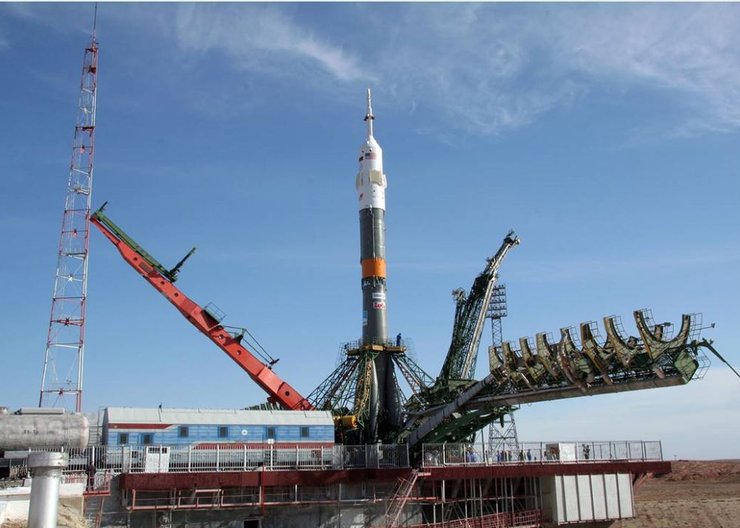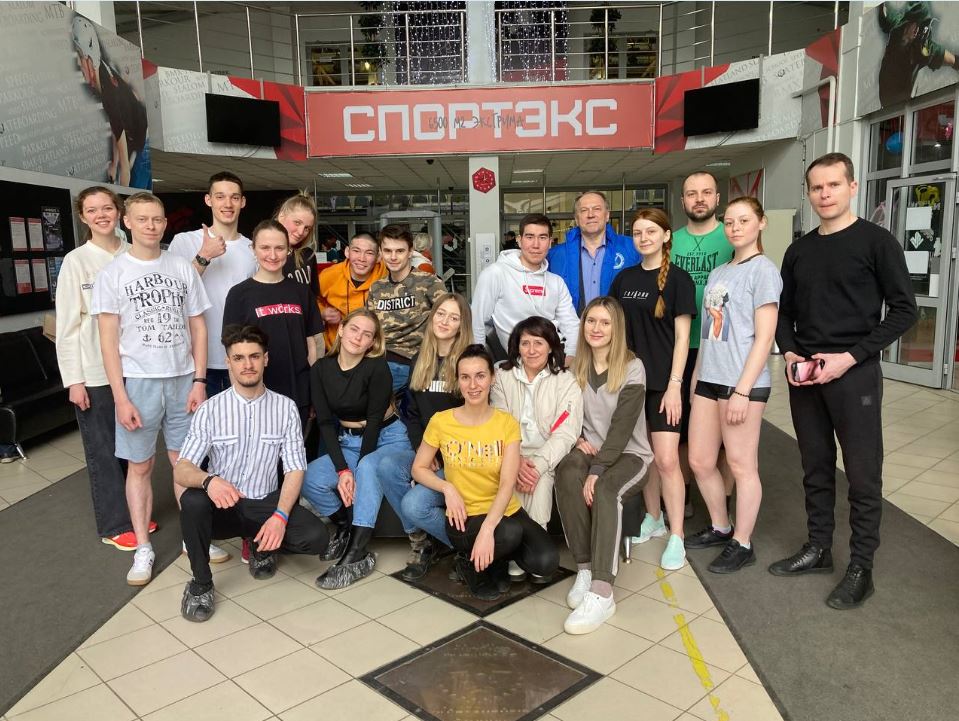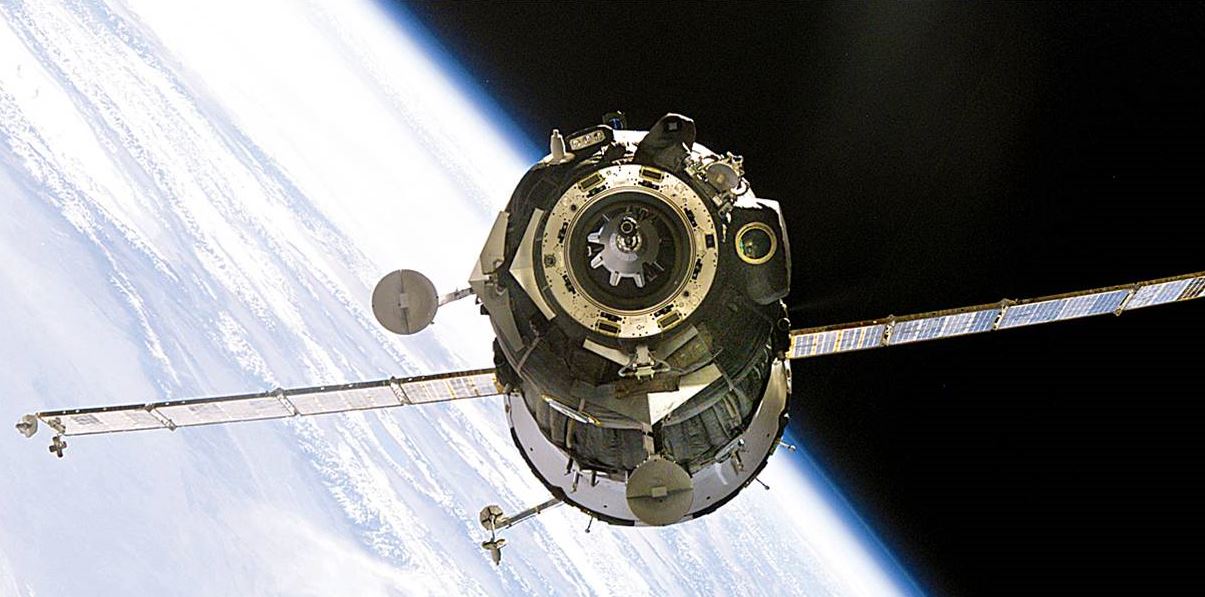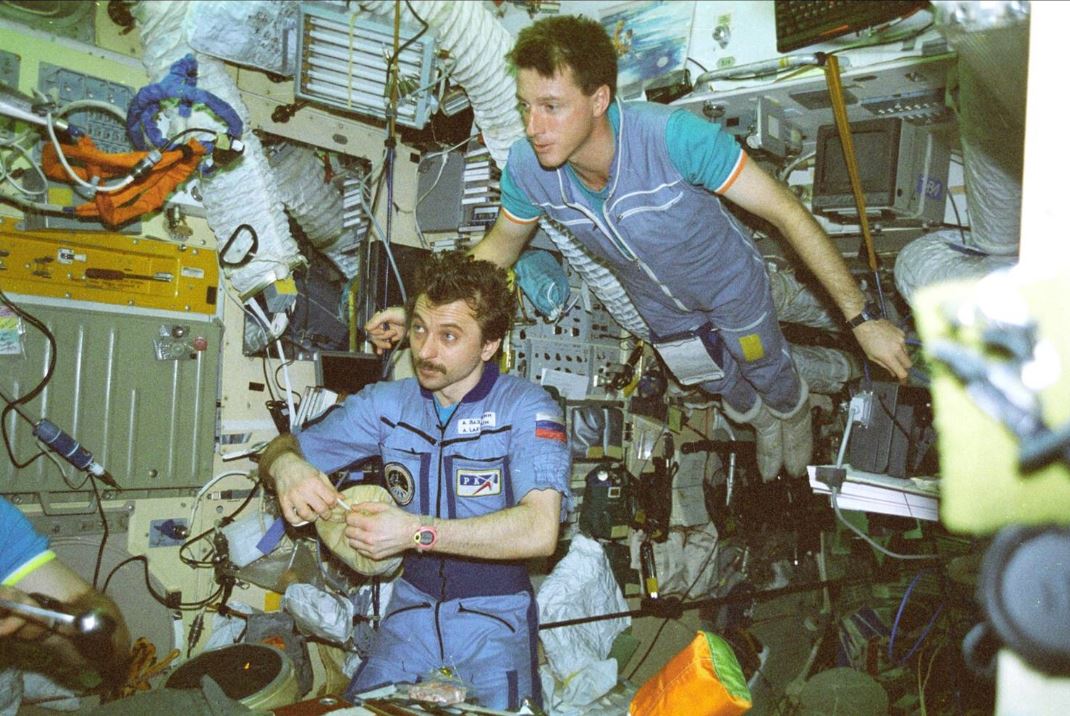18.04.2022The project won a presidential grant last year, and the community that implements it received the status of an autonomous non-profit organization.

Journalists from Gorodskie novosti talked to the team of young girls and boys who have a lofty goal – to venture to the outer space. Or, preferably, break out of the earth's atmosphere and fly closer to the stars. And if it doesn't work out, then build rockets, design spacesuits, develop an onboard menu. After all, this is also an important task - to do everything so that the space launch takes place and is successful.
Trampolining
We met with the participants of the Space Odyssey project at the Sportex sports centre. They came there from different parts of the city to practice trampoline jumping, to develop the ability to control their bodies in zero gravity.
To the uninitiated observer, everything looked like simple entertainment. But in fact, this task is technically difficult. You need to jump as high as possible and successively turn 90, 180 and 360 degrees. Such a trick in preparation for flights is performed by real astronauts.
Evgenia, 31, is a space technology design engineer and works at the Reshetnev Institute's Information Satellite Systems (ISS) in Zheleznogorsk.
— Since childhood, I dreamed of connecting my life with space. When I was a student at the Aerospace University, the teachers announced to us that the Space Odyssey project was being launched, where they would train endurance and will up to a trip to the taiga in winter, to give lectures on astronomy. Without hesitation, I just joined the project, successfully passed all the tests and reached the final.
Smart and Healthy

What is happening now is already the third wave of the Space Odyssey programme, which was developed by Russian cosmonaut Alexander Lazutkin. The first one was implemented in 2004. In 2016, it was improved, supplemented with new stages. Participants jumped with a parachute, contacted the crew, which at that moment was on the International Space Station. They went through a three-day survival school in the taiga, where cosmonauts and rescuers taught them to put up tents in the snow, knit knots, build a fire, build a shelter from improvised means, give signals and provide first aid.
— Initially, the Space Odyssey was conceived as a purely educational project, Alexander Lazutkin wanted to show the students of Siberian State Aerospace University the profession of an astronaut from the inside, give them the opportunity to go through all the stages of training and even try to fly a spacecraft, — says Galina Yakovleva, the executive director of the project, who was standing by his origins. — We revived this project when the conditions for recruiting cosmonauts into the corps changed. Previously, only employees of specialized space enterprises or military pilots were accepted there. Then an open selection was announced, and now healthy and smart kids from related industries can also become members of the squad. The main thing is to train them properly. So we thought, why don't we do it?
In the Krasnoyarsk Region there are all conditions for the training of cosmonauts – we have taiga, mountains, caves, Yenisei River. Despite any economic upheavals, the machine-building complex with a powerful engineering school has been preserved. Having worked for a couple of years at the legendary Krasmash, at the ISS or at the Geophysics Bureau, a person becomes a very strong techie. If you add to this a supply of health, stamina, a strong psyche and a bit of romance, you will get an ideal candidate for performing tasks on space stations.
As for the 2004 Odyssey graduates (at that time they were all students of the Siberian State Aerospace University), these people are already under forty, and they can rightfully be considered the intellectual elite. Not only the region, Siberia, but the whole country. All of them work in the space industry, mainly engaged in teaching activities; one project participant has grown to the position of Deputy General Designer of the ISS.
Building a Starship Together

The main partner and organizer of the Space Odyssey project was the Krasnoyarsk regional branch of the Union of Mechanical Engineers. Andrey Sharov, deputy chairman of the organization, notes with some pride: although Alexander Lazutkin wanted to implement the Space Odyssey in other cities of Russia, it was only possible to do this here, in Krasnoyarsk.
— Our local manufacturing giants that produce unique rocket and space technology and devices need fresh blood. They are interested in attracting young people to the industry with the help of such projects. Well, everyone probably wants someone from the Krasnoyarsk Region to finally be in orbit.
The start of Space Odyssey - 2022 was launched on February 1. The qualifying round was attended not only by specialists and students of specialized educational institutions, but also by cadets of the military institute of the Siberian Federal University, future doctors and even cultural figures. Some purely engineering knowledge (for example, on the design of an aircraft engine) will not be required this time. The main emphasis is on promoting a healthy lifestyle. Pilot-cosmonauts will tell the children about the physical form of those who apply for joining the cosmonaut corps, what factors of space flight affect the well-being of a person, and how to resist them.
Participants of the Odyssey will learn how the rocket and space industry was created in our region, what research work is being done in our region, what equipment is being produced. For them, the Museum of Cosmonautics, as well as various space industry enterprises, will be carrying out special tours. On March 13, the students began intensive physical training. The selection for each next stage is based on the results of the previous one. The strongest will reach the end and again go to the cosmodrome, where they will witness the launch of the spacecraft.
Accent

A series of lectures on astronautics for potential cosmonauts and high-class professionals in other fields of activity was conducted by the author and project manager Alexander Ivanovich Lazutkin. The value of this material is that it is based on Alexander Ivanovich's real personal space experience, as well as on the experience of astronautics veterans with whom he was acquainted.
The lecturer did not embellish reality. He talked about the achievements of Soviet cosmonautics, about the tragedies that occurred during the years of its formation, about the closure of brilliant projects after the collapse of the Soviet Union. The audience asked many questions. Alexander Ivanovich answered some of them via video link, and some of them at a face-to-face meeting on April 11 in Krasnoyarsk considered one of the most "cosmos" cities in Russia.
